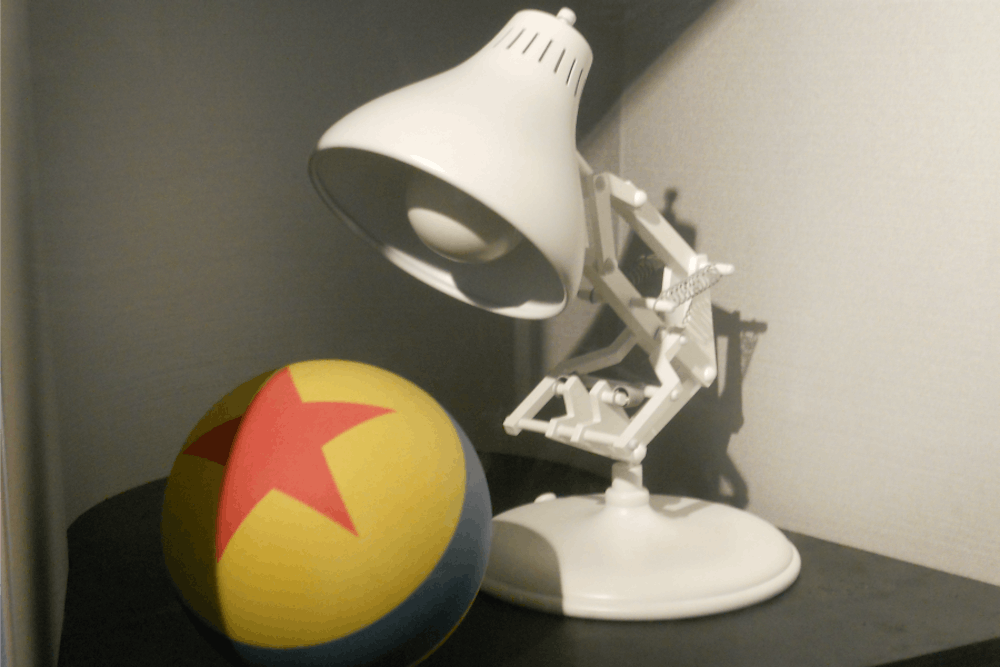By Olivia Lewis, For The Miami Student
A candy-colored adventure fraught with feeling, Pixar's "Inside Out" (2015) deftly explores both the positive and negative aspects of the human experience and, in doing so, highlights the necessity of the entire emotional spectrum.
At first glance, its storyline is a gamble - it features an 11-year-old girl named Riley (Kaitlyn Dias), whose life is navigated by her personified emotions from behind a control panel in her mind. However, if anyone could pull off such a wacky premise, it would be the team that effectively mesmerized audiences with tales about rats that cook, balloons that hold houses aloft and robots that fall madly in love.
Like the sterling animation house's predecessors, this kiddie flick comes laden with a mature, albeit subtle, theme - that as people age, they must accept sad or painful experiences as valuable parts of the human condition. However, it packages it all in bright pastel hues and absurd shenanigans that will captivate young and old audiences alike. This message is primarily delivered through the film's emotional starlight, Joy (Amy Poehler)
Effervescent and bubbly, Joy always wants to be in control, but doing so proves to have dire consequences. This is especially true after the downbeat, but sweet Sadness (Phyllis Smith) accidentally meddles with the framework of Riley's memories. The result is kicking Riley's tween turmoil to the highest level and leaving the rest of the emotions, including Anger (Lewis Black), Disgust (Mindy Kaling) and Fear (Bill Hader), to their own misguided devices. Together, Joy and Sadness embark on an odyssey through Riley's consciousness in order to keep her spirits high, but in the end they learn a wise lesson about tough times being a necessary, even lucrative, part of life.
From Joy dragging Sadness' deflated body through a maze of memories to Sadness doing her best to warn the impulsive Joy of danger, the film does an impressive job of illustrating the changes made in the relationship between two emotions that just can't seem to get along. Although Sadness is someone who Joy reluctantly tolerates for most of the flick's runtime, the sluggish, mopey heroine eventually reveals herself as someone deserving of Joy's respect.
The film doesn't fully brandish this change in outlook until Sadness succeeds where Joy could not in comforting Riley's forgotten imaginary friend, Bing Bong (Richard Kind). The development of the initially rocky relationship is not only natural, but also heartfelt, and will have viewers searching for people to reconcile with in their own lives.
As for the voices, no other cast could fit their roles more perfectly. Smith's cheerless Sadness serves as the perfect foil to Poehler's sprightly Joy, while Anger's surprisingly adorable appearance and diminutive stature makes Lewis Black's blow-top performance that much more entertaining. Hader depicts Fear as an anxiety-ridden worrywart, while Kaling's pretentious Valley-girl delivery keeps Disgust feeling relevant to the team. The effect is a shining halo of a cast working together to add life to the film and its basic concept.
"Inside Out" opts for a perfect balance between context and story, lest spending too much time inside Riley's head alienates the viewer from Riley as a character. The connection between the two is ensured through the use of timely, play-by-play glimpses into Riley's real life depression. It's a topic that while sensitive, is treated in a way that kids can comprehend.
As Riley becomes more and more estranged from her life, she loses the aspects of her personality that make her who she is. This loss is shown on-screen through the literal collapse of Family, Friendship, Goofball, Honesty and Hockey Island. For that reason, although "Inside Out" takes place in Riley's head most of the time, it surfaces into the outside world just enough so that the film does not become overly immersed in abstract thought.
However, it's the film's carefully plotted out landscape that truly adds depth to the plot. Whether it's traipsing through a forest of French fries or dashing after the "Train of Thought," directors Pete Docter and Ronnie Del Carmen do a remarkable job of illustrating the complexities of Riley's inner world. There's the spooky Subconscious, which houses troublemakers, and the Memory Dump, a stygian pit for the forgotten.
But despite its fantastical nature, each cornerstone of Riley's mind is presented in a believable way. Rather than simply naming these locations and forcing the viewer to come to their own conclusions, the film uses Bing Bong and other characters to offer concise, yet simple explanations for each location's purpose.
Overall, "Inside Out" is a compelling model for how the brain really works, playfully teasing at the workings of the human psyche without becoming too convoluted for young audiences to grasp.
"Inside Out" will be shown on Friday, Sept. 18, at 8 and 11 p.m. in Wilks Theater.

